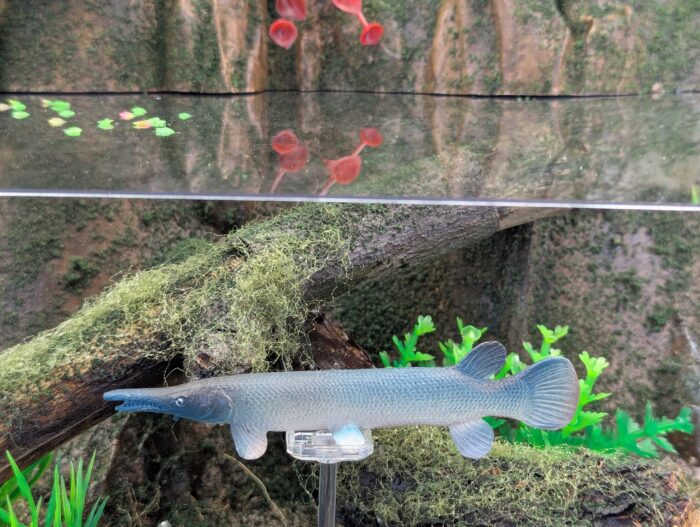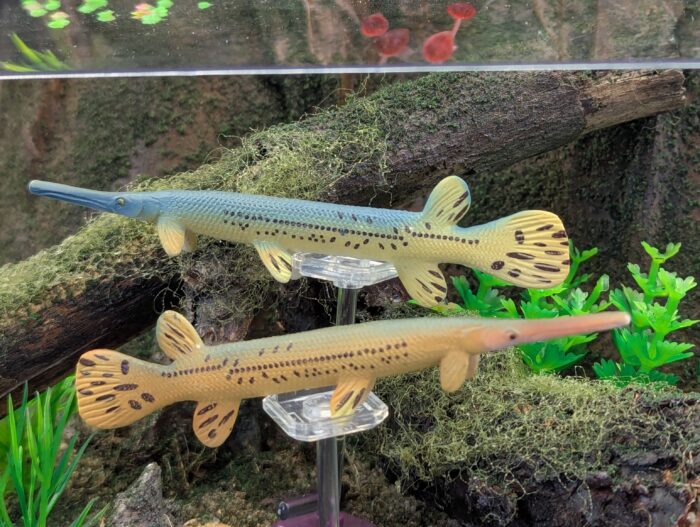Here we are, working toward the last August 2015 releases from Replica Toy Fish, which is technically a pair of figures that use the same model but different colours. And more specifically, three inch figures that represent a species already seen as a six inch figure. That’s right, more figures of the the alligator gar, Atractosteus spathula.
Author: sbell
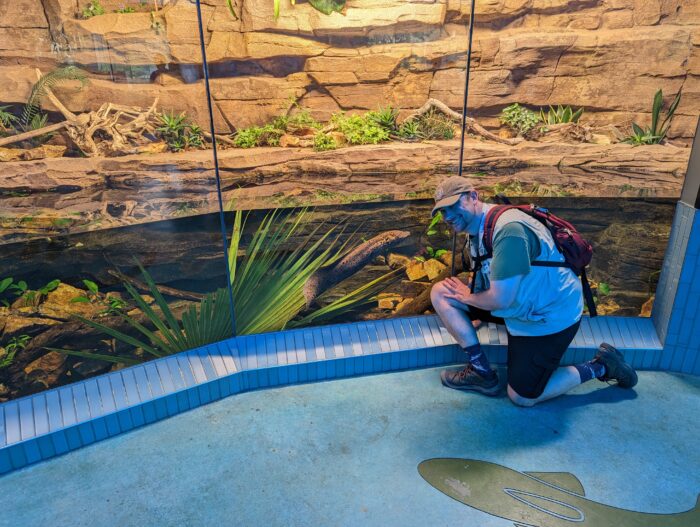 Hey, my name is Sean, known as SBell on this and many other forums. I have a background in physical anthropology and vertebrate palaeontology but I don’t do any of that now. I have been a dedicated animal figure collector for over 25 years, with a focus on freshwater, prehistoric and unusual fishes (sometimes there’s overlap!); prehistoric mammals; other interesting prehistoric animals; and modern carnivores (especially hyenas), but I will also pick up almost anything that appeals to me (I recently realized that includes salamanders...huh). I used to run an online figure store for a while, then transitioned that into a personal blog about my figures there as well. Recently, that blog was adopted into the ATB/DTB umbrella and can now be found here, mostly as a curated site so that it isn't lost (you can find it here now) When I’m not taking endless photos of my figures for posts or managing my ridiculous collection database I spend time taking care of the fish tank (polypterids rule!), being with the family, and trying to get outside before the Canadian winter forces us inside.
Hey, my name is Sean, known as SBell on this and many other forums. I have a background in physical anthropology and vertebrate palaeontology but I don’t do any of that now. I have been a dedicated animal figure collector for over 25 years, with a focus on freshwater, prehistoric and unusual fishes (sometimes there’s overlap!); prehistoric mammals; other interesting prehistoric animals; and modern carnivores (especially hyenas), but I will also pick up almost anything that appeals to me (I recently realized that includes salamanders...huh). I used to run an online figure store for a while, then transitioned that into a personal blog about my figures there as well. Recently, that blog was adopted into the ATB/DTB umbrella and can now be found here, mostly as a curated site so that it isn't lost (you can find it here now) When I’m not taking endless photos of my figures for posts or managing my ridiculous collection database I spend time taking care of the fish tank (polypterids rule!), being with the family, and trying to get outside before the Canadian winter forces us inside.All reviews by this author
Shovelnose Sturgeon (6 Inch Series by Replica Toy Fish)
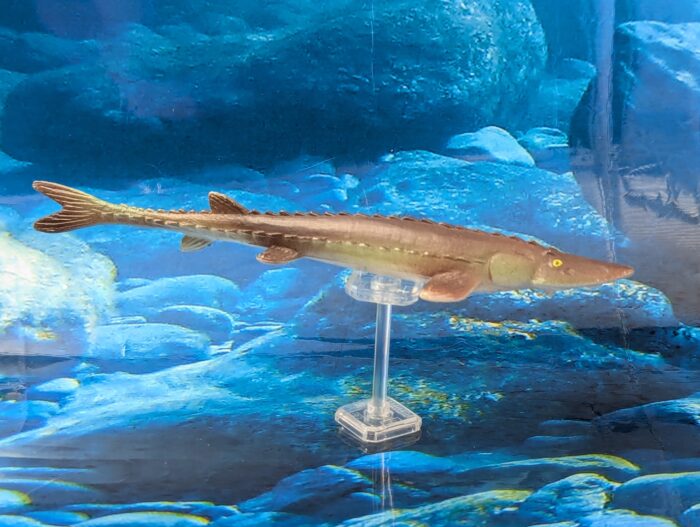
This figure is the sixth and final figure from the Replica Toy Fish 6 inch series, and possibly the most unique model of the whole company’s run. The figure is the shovelnose sturgeon Scaphirhynchus platorhynchus, by no means the first sturgeon on the blog, but the first not from the genus Acipenser (previously including lake sturgeon and Chinese sturgeon) and…probably the only figure from the genus so far (there are other Acipenser figures…and someday we might get to Huso, but I digress).
Alligator Gar (6 Inch Series by Replica Toy Fish)
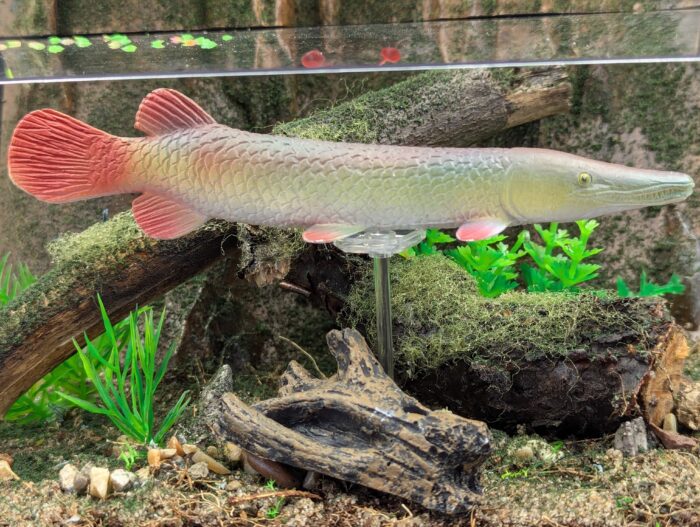
Back with another Replica Toy Fish figure, another from the original (and only) six-inch figure collection. I won’t lie, of the 6 this was one of the two I was most excited for. At the time I think it was the only model of the species…or maybe even the whole family (the collection is a bit of a blur sometimes).
Guadalupe Bass (3″ Figure by Replica Toy Fish)
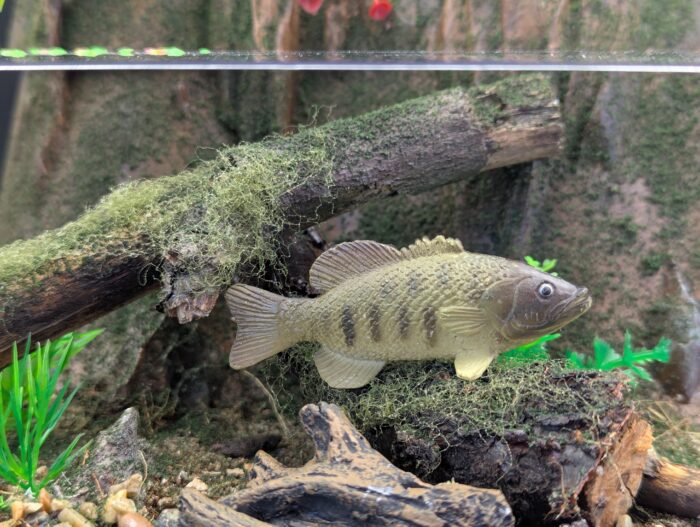
In August 2015 another wave of figures was released by Replica Toy Fish. Once again, no real announcement or launch, I think I found out because of a photo on the STS collector site or something. Maybe I found out about a different figure, and this one was there too. Seems like something that would be important for a company to make sales…anyway, it was just a few more species, but again, pretty popular models.
Longnose Gar (3″ figure by Replica Toy Fish)
Lake Sturgeon (3″ figure by Replica Toy Fish)
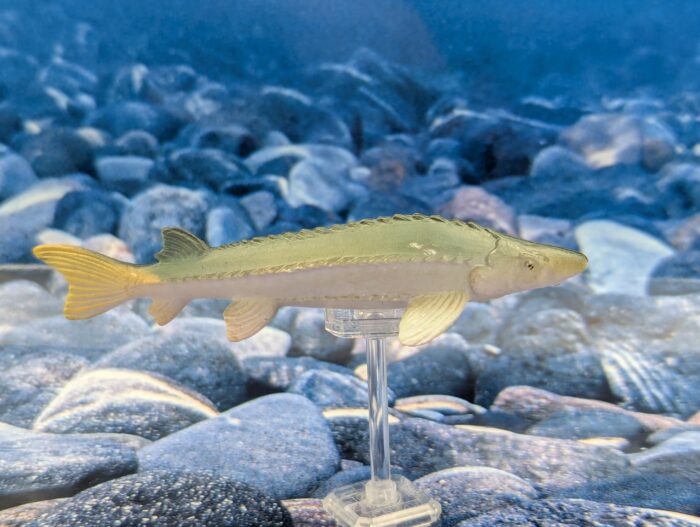
Back with another Replica Toy Fish figure in the 3″ line, another of the models released in or around April of 2015. Again, I think one that I caught wind of via another collector or forum. This one is the lake sturgeon, Acipenser fulvescens, a species that was seen once before in the Safari Great Lakes toob, and was a welcome addition to the RTF series as well.
Longnose gar (6 Inch Series by Replica Toy Fish)
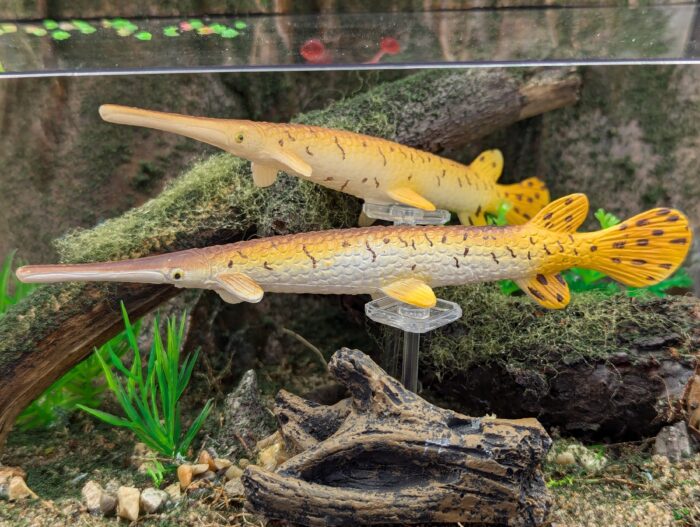
Back with another figure from the Replica Fish Toys 6″ line, this time the longnose gar Lepisosteus osseus. Not as well known as its relative the alligator gar (and certainly not as common in figure form) this is nevertheless another distinctive, prehistoric fish from the waters of eastern North America, from southern Quebec to the Rio Grande drainage in Mexico and Texas.
Striped Bass (3″ figure by Replica Toy Fish)

This post will look at another of the figures released in April of 2015, the striped bass Morone saxatillis. After the initial twelve figures, this is the only species released that would be best thought of as marine, or at least less ‘freshwater’ than any other figure in the series (although many are catadromous or anadromous, or may range back and forth).
Brown Trout (3″ figure by Replica Toy Fish)
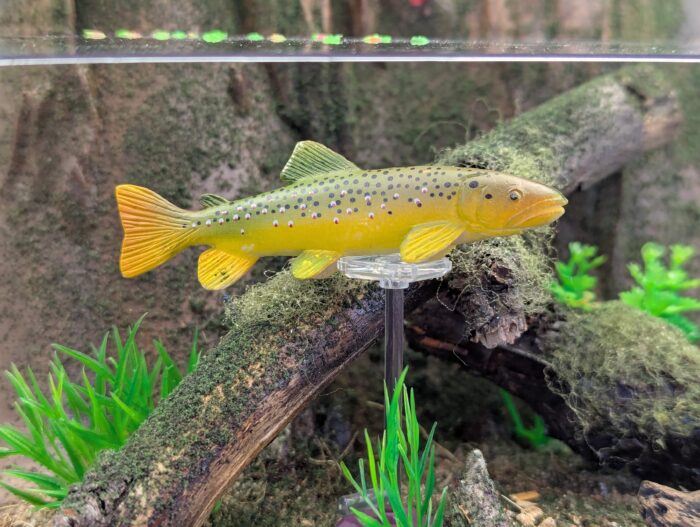
Now that I’ve reviewed all twelve of the original 3″ Replica Toy Fish figures (here, here, here, and here) I will start taking the opportunity to go into the figures that were released later. There was no specific release schedule, or indeed, any announced waves of releases. From what I could work out based on purchasing records, there were a number of figures released in 2015, the first assortment coming out for April.
Bluegill, Pumpkinseed, Crappie (3″ Pond Fish set Part 2 by Replica Toy Fish)

And here we have the final trio of the original 3″ fish produced by Replica Toy fish, the second half from the ‘pond fish’ set. Similar to my look at the two halves of the American Angler set (here and here), the first Pond Fish set featured a range of taxonomic groups, and this second half will be all from a single family–Centrarchidae, the basses and sunfish.
Largemouth Bass, Channel Catfish, Yellow Perch (3″ Pond Fish set Part 1 by Replica Toy Fish)

Back with another trio from the original dozen three inch fish released by Replica Toy Fish. When packaged in the small acrylic tubes, it was referred to as the ‘Pond Fish’ set. While the ‘Northwoods’ set featured popular angling fish found primarily in northern North America, the next six are normally considered more southern in their natural distribution–but as with any popular sport fish, they’ve found themselves spread, legally or not, into many other regions of North America and the world.
Northern Pike, Muskellunge, Tiger Muskie (3 Inch Northwoods Fish set Part 2 by Replica Toy Fish)

I’m back with the second half of the Northwoods set from Replica Toy Fish. I looked at the other three species here, and now I’ll look at the other three, also three popular sport fish in more northern areas of North America (one of which is naturally found more broadly). The species today are all in the family Esocidae, the pikes: the muskellunge Esox masquinongy, the northern pike Esox lucius, and the tiger muskie Esox masquinongy x lucius (a hybrid of the northern pike and muskellunge).

